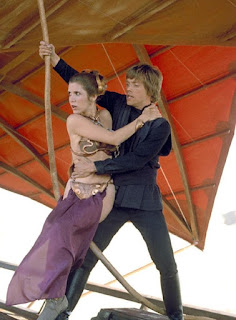By Michael Lyons
“Jaws 2” would be a great film...if there had never been a “Jaws.”
It is after all a sequel to one of the most popular films of all time. The original “Jaws” essentially gave birth to the Summer Movie Season and the Blockbuster. It was a film that had such a wide spread impact on pop culture that, to this day, there is trepidation at beaches each and every summer. It was a film whose lines of dialogue and “dah-dum” John Williams’ score have become more than just a part of the movie. And, “Jaws” also propelled a young, wunderkind director named Steven Spielberg into the Hollywood stratosphere.
Yes, that 20 (or is it 25?) foot great white shark from “Jaws” casts quite the shadow that looms large over “Jaws 2.” We are most definitely swept up in the story of the sequel and seeing familiar faces and settings, but throughout the film, there’s always the original in the back of our mind.
With this June marking the 40th anniversary of “Jaws 2,” its the perfect time to look back at one of film’s most famous sequels.
Set once again in the small, New England town of Amity (put that on your list of places to avoid on summer vacation), the film takes place several years after the events of the original. Once again, another great white shark is terrorizing the inhabitants of the island and once again, Chief Brody (Roy Scheider) must convince everyone that this threat is real and face the shark himself.
While that does seem carbon copy, there is a unique element to “Jaws 2” in that, as it’s set several years after the original, it allows one of the Sheriff’s sons, Mike to be a teenager and introduce his high school friends, which is an aspect that sets the sequel apart.
The last third of the film centers on Mike and his friends trapped on their damaged sailboats on the open water and being persistently pursued by the shark. This turns “Jaws 2” into almost a more horrific version of Alfred Hitchcock’s “Lifeboat.”
These scenes feature some intense attack sequences (one in which one of the teens struggles to climb on board a capsized boat, while the shark bears down, is a true edge of seat moment).
Director Jeannot Swarc did a solid job of choreographing the action in these moments. It was an unenviable job to have to follow Spielberg, but Swarc does admirable work here, attempting to give “Jaws 2” an identity all of its own.
Swarc also did a nice job of creating continuity from “Jaws.” What helped with this were many returning, original cast members. In addition to Scheider, Lorraine Gary is back as Ellen Brody, Murray Hamilton as Mayor Vaughn (the worst politician with the best jacket) and Jeffrey Kramer as Hendricks.
The actors all settle easily back into their roles, providing a nice sense of comfort and familiarity, which sometimes works against the film, once again reminding us of the superior original.
Still, even with this baggage, “Jaws 2” is a movie that “Jaws” fans can truly revel in. Released on June 16, 1978 (with one of the most memorable tag lines: “Just When You Thought it Was Safe to Go Back in the Water!”), the film, with serviceable tension and excitement, coupled with the backdrop of New England summer, is perfectly fine and entertaining viewing for this time of year.
However, if it hadn’t been for “Jaws,” “Jaws 2” would have been more than that.
Sources:
IMDb
Wikipedia









